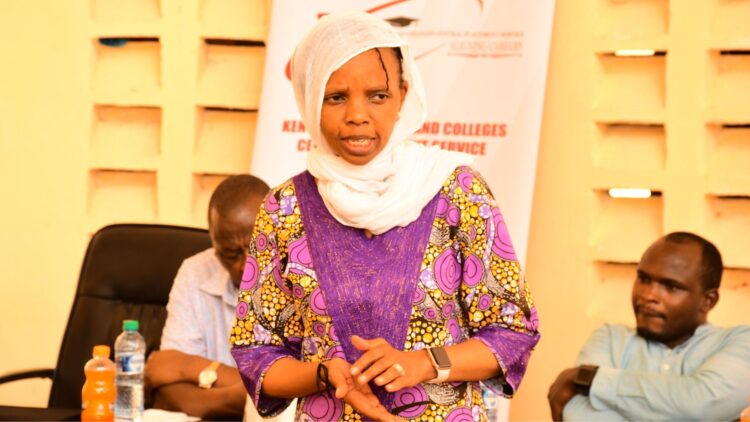KUCCPS Placement and Cut-Off Points: How College and University Admissions Are Determined.
The Kenya Universities and Colleges Central Placement Service (KUCCPS) plays a critical role in determining how students are placed into various academic programs—ranging from artisan and diploma courses to full degree programs. The body sets both cluster and cut-off points based on student performance data from the Kenya Certificate of Secondary Education (KCSE).
Subject Clusters and Course Eligibility
Before selecting a course, it is crucial for students to understand subject clusters. These clusters are groupings of four KCSE subjects required for eligibility in particular degree programs. For example, students aiming for health science degrees must have studied Biology, Chemistry, either Physics or Mathematics, and either English or Kiswahili.
Programs sharing the same subject combinations are grouped under one cluster. Full lists of these clusters can be accessed via the KUCCPS Students’ Portal under the Downloads section.
How Weighted Cluster Points Are Computed
A vital aspect of placement is the cluster weight, which ranks an individual student’s performance against peers who sat the same year’s KCSE exam. This weight is derived from performance in the four cluster subjects and is compared to the best-performing candidates nationwide. KUCCPS computes these values to three decimal places to avoid ties between applicants.
Students are strongly advised not to manually calculate these cluster points. KUCCPS automatically generates and displays them within each student’s portal using an internal system that processes KCSE data and Performance Indices (PI) provided by the Kenya National Examination Council (KNEC).
Since PI data is not shared directly with students, accurate personal computation is not possible. The seven top-performing subjects in the KCSE are used in the weighted cluster point formula.
Determining Cut-Off Points for Degree Programs
Cut-off points indicate the lowest cluster weight of a student admitted to a specific program, and they shift each year depending on both applicant performance and the capacity of the program.
During placement, students are arranged in order of their cluster weights, from highest to lowest. KUCCPS fills available slots sequentially until reaching the final admitted student, whose weight becomes the official cut-off for that course.
This entire process is automated and data-driven, meaning cut-off points cannot be determined beforehand. KUCCPS CEO Alice Wahome previously emphasized that merit remains the central factor in student placement. She explained that the institution uses a computer system to rank students based on their selected programs as soon as KNEC releases the results. The cut-off, she added, is based on the ranking of the last student admitted into a program.
Minimum Entry Requirements by Education Level
Eligibility varies across different qualification levels. Artisan (Level 4) programs require a minimum KCSE mean grade of E. Craft (Level 5) programs demand at least a D grade, while Diploma (Level 6) courses are open to those with a C– or higher. For university degree courses, a student must have attained a KCSE mean grade of at least C+.
Some programs, especially at the degree level, may also have additional subject-specific requirements. These are made available on the KUCCPS portal during the application window. Weighted cluster points and current cut-off scores will also be provided at that time to guide students in making informed course selections.
Curriculum Reform in Kenya: Mathematics No Longer Core at Senior Level
Transition from 8-4-4 to CBC
Kenya is phasing out the 8-4-4 education system, which previously categorized mathematics as a compulsory subject along with English, Kiswahili, and at least two sciences. The new Competency-Based Curriculum (CBC) introduces a significant shift in structure and subject selection at the senior secondary school level.
Pathway-Based Specialization
With the CBC, students are guided to specialize early by selecting subjects aligned with their interests and abilities. The framework promotes individualized academic growth through a focus on career pathways from the onset of senior secondary education.
Read Also: KUCCPS-Approved Medical Courses for KCSE Students with C (Plain) and Below
Core and Optional Subjects
Under the revised curriculum, students are still mandated to study English, Kiswahili, and Kenya Sign Language. Mathematics, however, has transitioned from a compulsory subject to an elective, now included among 38 optional subjects available for students to choose from based on their desired academic and professional trajectory.
STEM Requirements and Curriculum Debate
For learners who opt for the Science, Technology, Engineering, and Mathematics (STEM) pathway, mathematics remains compulsory. Education authorities have indicated that while mathematics is currently optional for other pathways, the role it should play in the broader curriculum is still under active discussion.
KUCCPS Placement and Cut-Off Points: How College and University Admissions Are Determined.



Discussion about this post